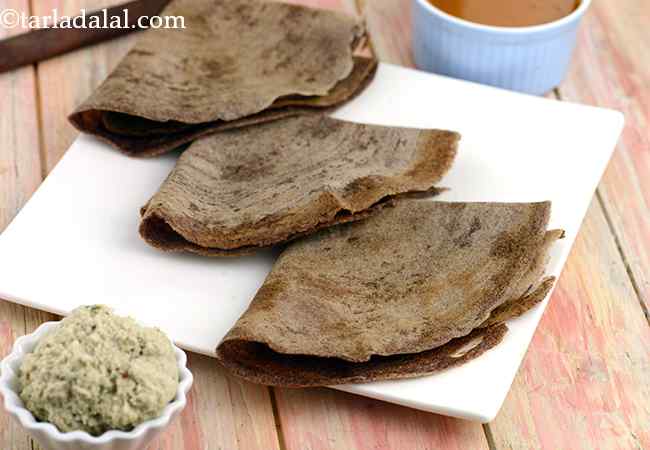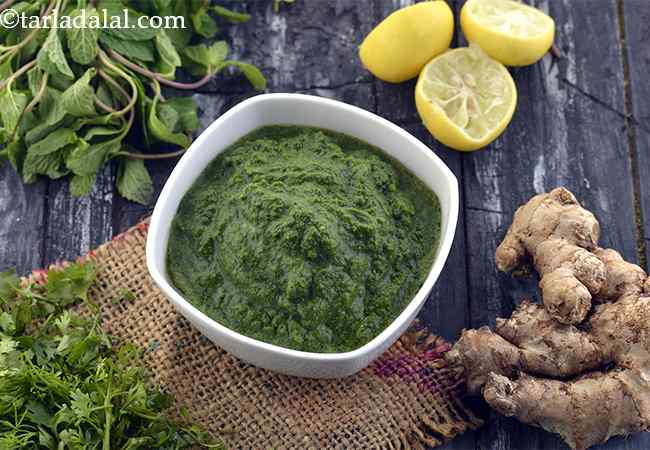Sada Dosa recipe makes 20 dosas.
104 calories for 1 Sada Dosa, Sada dosa or dosa is made up of urad dal, rice, methi, poha and fats for cooking. Cholesterol 0 mg, Carbohydrates 17.5g, Protein 2.5g, Fat 2.7g.
See Sada Dosa recipe | plain dosa | South Indian sada dosa | how to make easy sada dosa | with 33 amazing images.
sada dosa recipe | plain dosa | South Indian sada dosa | how to make easy sada dosa is a famous street food as well as restaurant food in South India. Learn how to make easy dosa.
To make sada dosa, wash and soak the urad dal, fenugreek seeds and enough water in a deep bowl and mix well. Cover with a lid and keep aside to soak for 4 hours. Wash and soak the par-boiled rice, raw rice and thick beaten rice and enough water in a deep bowl and mix well. Cover with a lid and keep aside to soak for 4 hours. Drain the urad dal and fenugreek seeds and blend in a mixer to a smooth paste using approx. 1 cup of water. Transfer the mixture into a deep bowl and keep aside. Drain the par-boiled rice, raw rice, and thick beaten rice and blend in a mixer to a smooth paste using approx. 1 cup of water. Transfer the mixture into the same bowl of the urad dal batter, add the salt and mix well. Cover with a lid and keep aside to ferment in a warm place for 12 hours. Once fermented, mix it very well. Just before serving, heat a non-stick tava (griddle), sprinkle a little water on the tava (griddle) and wipe it off gently using a muslin cloth. Pour 1½ ladleful of the batter on it and spread it in a circular motion to make a 225 mm. (9”) diameter thin circle. Smear a little ghee over it and along the edges and cook on a medium flame till the dosa turns golden brown in colour and crisp. Fold over to make a semi-circle or a roll. Repeat with the remaining batter to make 19 more dosas. Serve immediately with coconut chutney, sambhar and malgapodi.
Delightfully crisp, golden-coloured pancakes made of a rice and urad dal batter, South Indian sada dosamake a more indulgent breakfast compared to easy, steamed idlis! Combined with chutney and sambar, Dosas are sumptuous and tasty, fit to be had not just for breakfast but for evening tiffin or even dinner.
While some people like to make plain dosas with leftover idli batter, others who do not like even a slight sourness make fresh dosa batter using the proportions described here. You can choose either option, as you wish.
Not only that, the versatile easy sada dosa offers a lot more choices. You can make it with oil, ghee or butter; in an iron griddle or a non-stick tava, plain or with a stuffing of potato bhaji or a layer of chutney! Enjoy your sada dosa fresh and hot, just the way you like it.
Tips for sada dosa. 1. The urad dal, rice and parboiled rice have to be soaked for 4 hours. So plan for it in advance. 2. Don’t miss out on adding fenugreek seeds while soaking. It helps in fermentation. 3. The batter usually takes 12 hours to ferment. But in winter season, it may take upto 14 to 15 hours depending on the temperature outside. 4. If using leftover batter from the fridge, then bring it to room temperature and then make dosa. This is very important or else you won’t get brown crispy dosa. 5. If the tava gets too hot, then sprinkle some water to bring down the temperature of the tava. By doing so the dosa will not stick to the pan. The ideal temperature of tava is very important to make the perfectly crisp dosa.
Is Sada Dosa healthy?
Yes and No. So sada dosa is healthy and not healthy at the same time and depends who is having it. Sada dosa or dosa is made up of urad dal, rice, methi, poha and fats for cooking.
What's good in the dosa.
1. Urad Dal : 1 cup of cooked urad dal gives 69.30% of folic acid of your daily requirement of folate. The folic acid in urad dal helps your body to produce and maintain new cells, especially red blood cells. Being rich in Phosphorus it works with Calcium to build our bones. See here for 10 super benefits of urad dal.
2. Fenugreek Seeds (Methi Seeds) : 1 tsp of fenugreek seeds soaked overnight and consumed early in the morning on an empty stomach is a remarkable cure to control blood sugar levels for diabetics. Fenugreek seeds have been known to benefit the heart by way of reducing cholesterol levels in the blood. Fenugreek seeds have long been suggested to enhance breast milk production to lactating mums. A teaspoon of fenugreek seeds swallowed with half glass water is also a very well-known home remedy for diarrhoea. See detailed benefits of fenugreek seeds methi seeds.
3. Ghee : Other than calories and fats, the only nutrients that ghee is rich in are the vitamins – all of which are fat-soluble. All the 3 vitamins (Vitamin A, Vitamin E and Vitamin K) are antioxidants which have a role in removing free radicals from the body and protecting our cell as well as help in maintaining skin health and glow. Ghee is an excellent, high-quality selection medium of cooking because of its high smoke point. As compared to most oils and butter, ghee can handle a smoke point of 230°C, 450°F, thus its less prone to oxidant and destruction of nutrients. Yes, ghee does contain cholesterol, but some amount of cholesterol is needed by the body. Cholesterol has some functions to play too. It is necessary for hormone production, brain function, cell health and lubricating the joints. It is, in reality, a high quality fat for the body and brain. Ghee is loaded with fats but that’s medium chain fatty acids (MCT) which aid in weight loss. Ghee is healthy for daibetics in small amounts and you need to check your fat intake at the same time. Learn to easily make your ghee at home which is free of preservatives. See benefits of ghee.
Rice : Here are the pros for rice. Rice is a great source of complex carbohydrates, which is an important source of energy for our body. Rice is low in fibre and therefore a good option for people suffering from diarrhea. What's not good in rice. Foods like rice are high in GI are not suitable for weight loss, heart patients, diabetics as they affect the blood sugar control levels. See details of is white rice and parboiled rice good for you?
Poha ( Beaten rice) : Pros for poha. High iron count (2.67 mg in a cup) of poha. Most people prefer eating poha for breakfast. The reason behind it is its high carb count. Poha helps us accomplish nearly 5% of potassium requirement which will control blood pressure and sustain cardiac health and further aids in controlling blood cholesterol too. Cons. Due to high carb content it is not good source of diabetic food. With calories to add along with carbs and not much fiber, poha should logically be constrained by those who intend to lose weight. High protein, less carbs and more fiber should be the target of weight watchers. Read is poha healthy?
Can Diabetics, Heart patients and overweight individuals have sada dosa?
Dosa is a moderate Glycemic Index recipe. Since, dosa has a high amount of rice which is rich in simple carbohydrates and it is fermented that is - it is pre digested, it does not prove to be a healthy option for diabetics, heart patients and weight watchers.
Diabetics can replace the rice with oats or ragi which will increase the fiber content and make recipes like Healthy Oats Dosa and Nachni Dosa.

Nachni Dosa
Can healthy individuals have sada dosa?
Yes, dosa works for healthy individuals. Dosa is a fermented food which is easy to digest. Fermentation of foods increases the bioavailability of nutrients which helps the body to assimilate more nutrition. The microorganisms break down the complex protein, carbohydrates and fat efficiently thereby helping to assimilate more nutrients from the food.
Ghee, butter or oil, which to use in making dosa?
Ghee and butter in moderate quantities is healthier option to make dosa. If you want to use oil, use olive oil, canola oil or peanut oil which are rich sources of MUFA which decreases the risk of heart disease as they lower the low density lipoprotein cholesterol levels (Bad cholesterol) in the body.
What to have your dosa with?
Have this with nutritious green chutney recipe which has ZERO sugar used in it made with mint leaves, onions and coriander or green chutney recipe. Coconut based options are healthy coconut chutney made from coconut and coriander and coconut coriander green chutney for idlis dosa uttapam vada. Don't add potatoes to your dosa as it will increase the carbohydrate content.

Green Chutney, How To Make Green Chutney Recipe
How to burn 104 calories that come from one Sada Dosa?
| Walking (6 kmph) = |
31 |
mins |
| Running (11 kmph) = |
10 |
mins |
| Cycling (30 kmph) = |
14 |
mins |
| Swimming (2 kmph) = |
18 |
mins |
Note: These values are approximate and calorie burning differs in each individual.